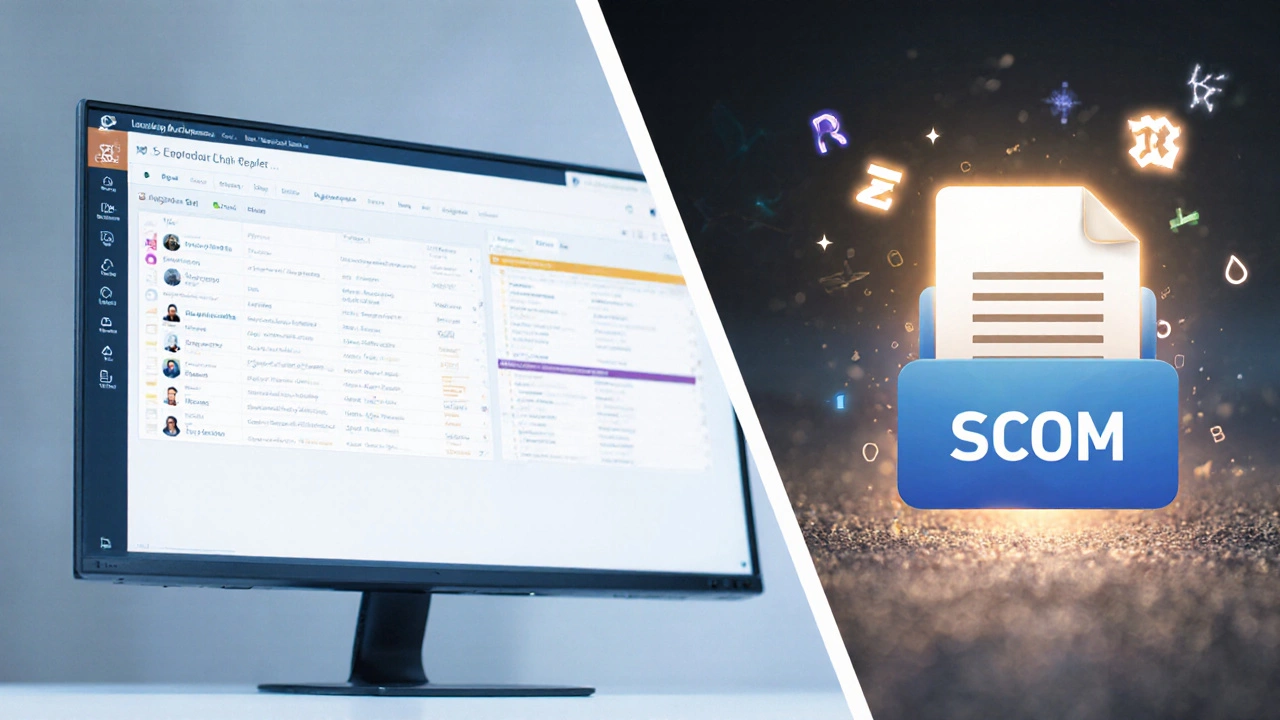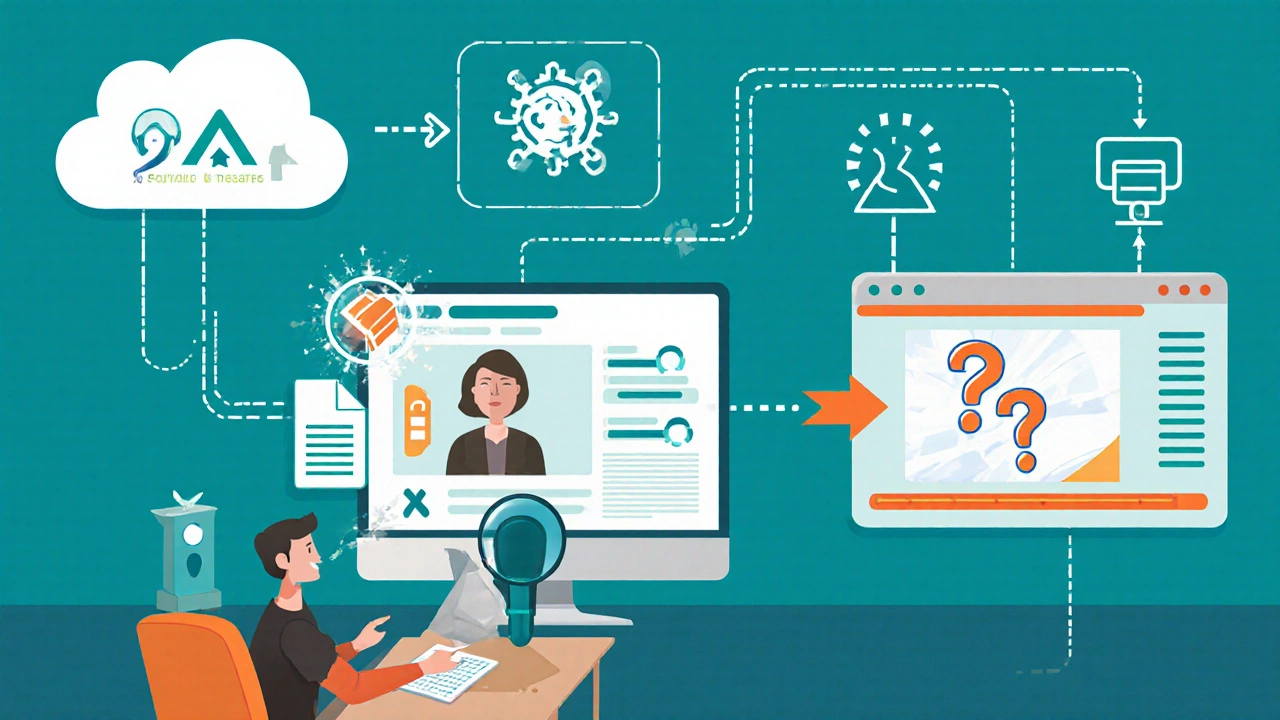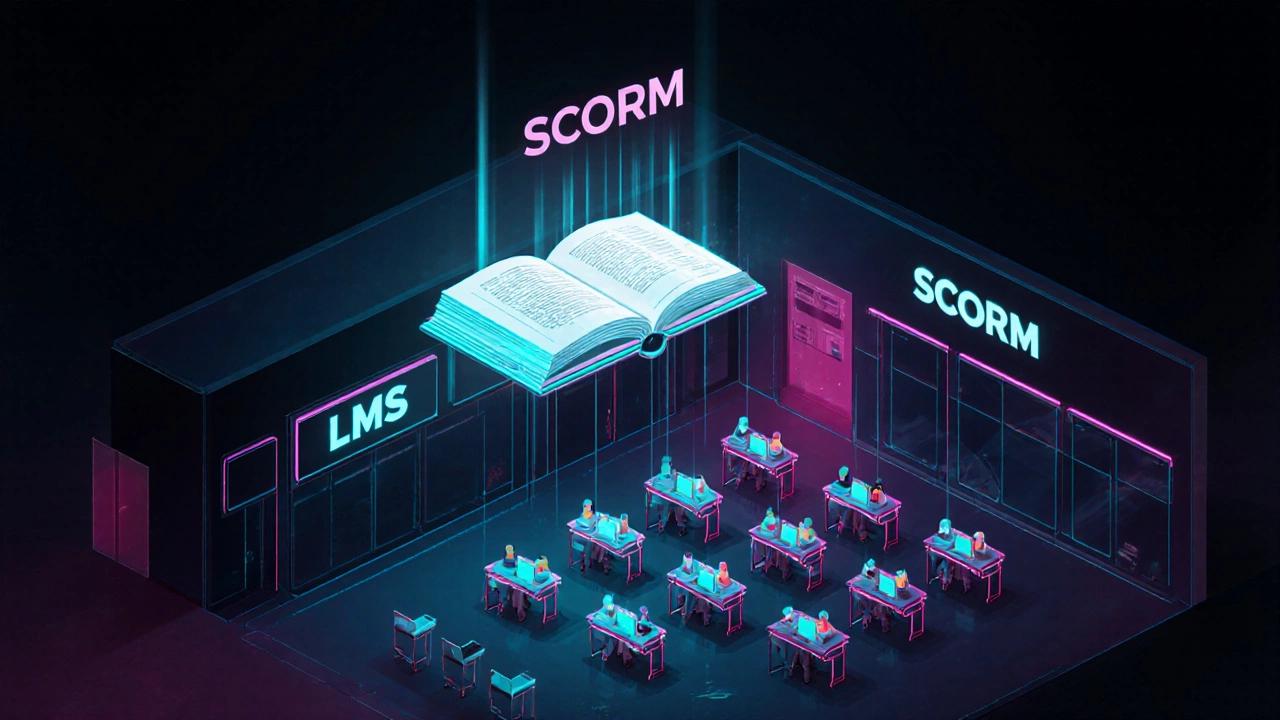LMS vs SCORM: Key Differences Explained
 Oct, 25 2025
Oct, 25 2025
LMS & SCORM Compatibility Checker
Select your requirements
Choose which features you need for your e-learning content.
Results
Select your requirements and click 'Check Compatibility' to see recommended SCORM version and LMS features.
is recommended for your requirements.
Your LMS should support these features:
Ever opened an e‑learning platform and wondered whether you were looking at an LMS is a software application that delivers, tracks, and manages online training and education or a piece of SCORM is a set of technical specifications for packaging and communicating learning content? You’re not alone. Many trainers, instructional designers, and business owners mix the two up, which can lead to costly mistakes when buying tools or building courses. This guide strips away the jargon, shows you where the two worlds intersect, and tells you exactly what to look for when picking a solution for your organization.
Key Takeaways
- An LMS is a platform you log into; SCORM is a file format that tells the platform how to run a course.
- SCORM handles content packaging, sequencing, and score reporting, while an LMS handles user management, reporting dashboards, and integrations.
- All modern LMSs support SCORM, but not every SCORM package needs a full‑featured LMS.
- When you need detailed interaction data, consider newer standards like xAPI (aka Tin Can API).
- Choose based on your biggest pain point: delivery and user experience (LMS) or content reuse and interoperability (SCORM).
What Exactly Is an LMS?
An LMS-short for Learning Management System-is the digital classroom that houses courses, tracks learner progress, and provides analytics to administrators. Think of it as the Google Classroom or Moodle of the corporate world. Typical features include user enrollment, role‑based access, quiz engines, certification paths, and integrations with HR or CRM tools. Because it’s a web application, an LMS can be hosted in the cloud, on‑premises, or offered as a SaaS solution.
Most LMSs also act as a hub for other standards. They import SCORM packages, launch them in a secure player, and collect the scores the package spits out. In that sense, the LMS is the interpreter, while SCORM is the language the interpreter understands.
What Is SCORM?
SCORM stands for Sharable Content Object Reference Model. It’s a family of specifications first released by the US Department of Defense in 2001. The goal? Make learning content portable across any system that speaks the same “dialect.” A SCORM package is a zipped folder containing HTML, JavaScript, media files, and an XML manifest that describes the course structure, sequencing rules, and how the learner’s score should be reported back.
When you upload a SCORM zip to an LMS, the platform reads the manifest, launches the HTML5 player, and uses JavaScript to push data like “Lesson Completed” or “Score = 85%” back to the LMS via the SCORM API. Because the API is standardized, the same SCORM file will work in Moodle, Canvas, or a corporate LMS without any rewrites.

Core Differences at a Glance
| Aspect | LMS | SCORM |
|---|---|---|
| Type | Software platform | Content packaging standard |
| Primary function | Deliver, track, manage learners | Define how content is launched and reported |
| Interaction with user | Login, dashboard, notifications | Runs inside the LMS player; no UI of its own |
| Data captured | Enrollments, completions, time‑on‑task, custom reports | Score, completion status, bookmarking |
| Versioning | Continuous updates (often SaaS) | SCORM‑1.2, SCORM‑2004 2nd/3rd/4th ed. |
| Compatibility | Integrates with HRIS, LMS marketplaces, analytics tools | Works in any LMS that supports the same version |
Why the Distinction Matters for Course Creators
If you’re an instructional designer, knowing the split saves you time and money. Build your lessons in an authoring tool (Articulate Rise, iSpring, Adobe Captivate) and export as a SCORM zip. You can then drop that zip into any LMS you like-no need to rebuild the course for each platform.
On the other hand, if your organization cares about brand‑specific dashboards, role‑based pathways, or granular reporting beyond “score” and “completion,” you’ll need a robust LMS. The LMS gives you the scaffolding to bundle multiple SCORM courses, add live webinars, and run compliance checks-all in one place.
One common pitfall: buying a cheap LMS that claims SCORM support but actually only handles the oldest SCORM‑1.2 version. Modern courses often rely on SCORM‑2004’s sequencing features, so make sure the LMS you pick can read the manifest you’re exporting.
Common Misconceptions
- “SCORM is a type of LMS.” Nope. SCORM is a set of rules a piece of content follows; the LMS is the engine that reads those rules.
- “If a course is SCORM‑compliant, I don’t need an LMS.” You still need a place to host the zip, track who’s taking it, and collect the results.
- “All SCORM packages are the same.” Different versions (1.2 vs 2004) support different features like roll‑up rules and adaptive sequencing.
- “xAPI replaces SCORM.” Not exactly. xAPI (Tin Can API) is newer and captures richer experience data, but many organizations run both side‑by‑side.

Choosing the Right Approach for Your Organization
Start by listing your top three goals:
- Do you need a single, branded portal for learners? Pick a feature‑rich LMS.
- Is content reuse across multiple platforms the priority? Focus on SCORM‑compliant authoring.
- Do you want deep analytics like “how long did they spend on a video?”? Consider xAPI or a Learning Record Store (LRS).
When budgeting, remember that LMS licensing often follows a per‑user or per‑active‑learner model, while SCORM is a one‑time packaging cost. Some vendors bundle both, but you can also buy an LMS and use free authoring tools that export SCORM.
Quick Checklist for Evaluating LMS and SCORM Compatibility
- Does the LMS support SCORM‑2004 3rd/4th edition?
- Can you upload a zip and see the manifest preview before publishing?
- Is there a built‑in test player to debug SCORM communication?
- Does the LMS offer an API or LRS to capture data beyond SCORM scores?
- Are you able to configure course sequencing rules in the LMS UI?
Frequently Asked Questions
Do I need both an LMS and SCORM?
Yes, in most cases. SCORM packages the content, while the LMS delivers it, tracks learners, and provides reports. Without an LMS you’d have a zip file with no place to host or analyze it.
Can I use SCORM without internet connectivity?
SCORM itself isn’t designed for offline use. However, many LMSs offer a “download for offline” feature that caches the SCORM player locally and syncs data once you’re back online.
What’s the difference between SCORM 1.2 and SCORM 2004?
SCORM 1.2 provides basic score and completion data. SCORM 2004 adds sequencing, navigation rules, and more granular roll‑up behavior, letting you create adaptive learning paths inside a single package.
Is xAPI a replacement for SCORM?
Not a straight replacement. xAPI (Tin Can) captures a wider range of learning experiences, like simulations or mobile app usage, and stores them in an LRS. Many organizations run both: SCORM for classic courseware and xAPI for modern, experiential tracking.
How does metadata factor into SCORM?
Metadata in the SCORM manifest describes each learning object-title, language, time estimate, and prerequisites. This data helps the LMS organize, search, and sequence content without manual input.
Can I track learner interactions beyond quiz scores?
SCORM alone only reports a limited set of data points. To capture clicks, video plays, or forum posts, you’ll need an LMS with built‑in analytics or integrate an LRS that speaks xAPI.
What are the security concerns with SCORM packages?
Since SCORM content runs HTML/JavaScript in the learner’s browser, vulnerable scripts can be a risk. Choose an LMS that sanitizes uploads and enforces HTTPS to protect data.
Bottom line: an LMS gives you the classroom, SCORM gives you the textbook. Pair them right, and you’ll deliver smooth, trackable learning experiences without reinventing the wheel.